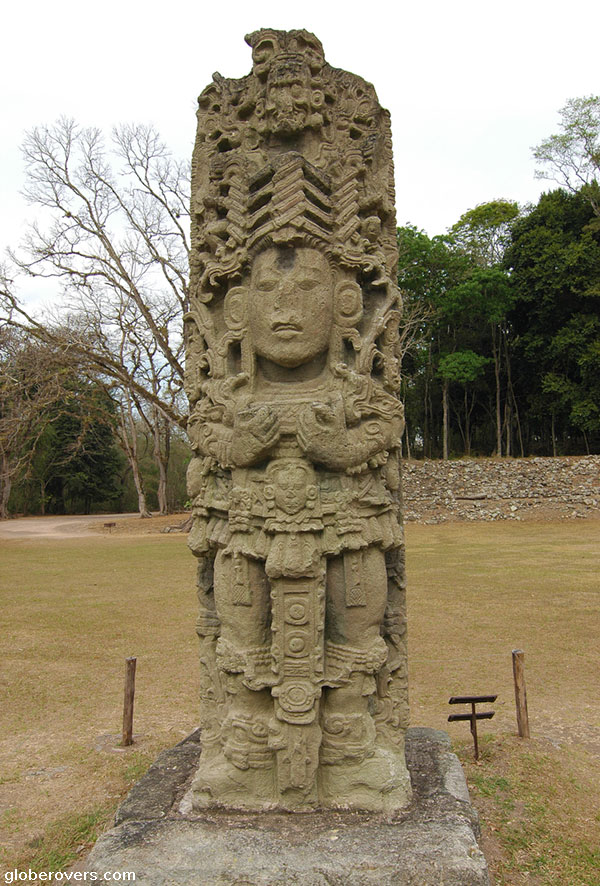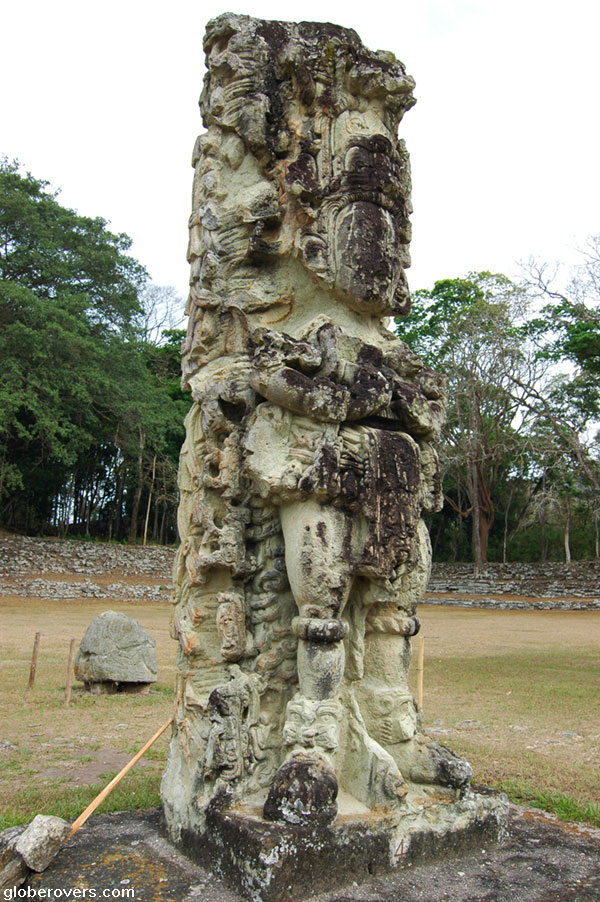
Located in western Honduras, not far from the border with Guatemala, are the ruins of Copán, an archaeological site of the Maya civilisation that thrived here between the 5th and the 9th centuries AD. The ruins are on the west bank of the Copán River, about 56 km (35 miles) west of the modern town of Santa Rosa de Copán.
According to historians, the civilization at Copán began as a small agricultural settlement about 1000 BC. It became an important Mayan city during the Classic Period (c. 250–900 AD), and at its peak early in the 9th century it may have been home to as many as 20,000 people and covered an area of about 250 square km. A dynasty of at least 16 kings ruled Copán from about 426 to 822, by which latter date the city had entered a serious decline. The city suffered some political disasters with the king being captured and executed in 738 AD. The Maya had completely abandoned the site by about 1200.
The Copán Ruins site was added to the UNESCO World Heritage List in 1980.
Today the site comprises some 100 hectares (250 acres). Its central area covers 22 hectares (54 acres) and consists of a few stone temples, two large pyramids, several stairways and plazas, and a court for games. Most of these structures centre on a raised platform (now referred to as the Acropolis) that was likely the architectural centre of the ancient city.
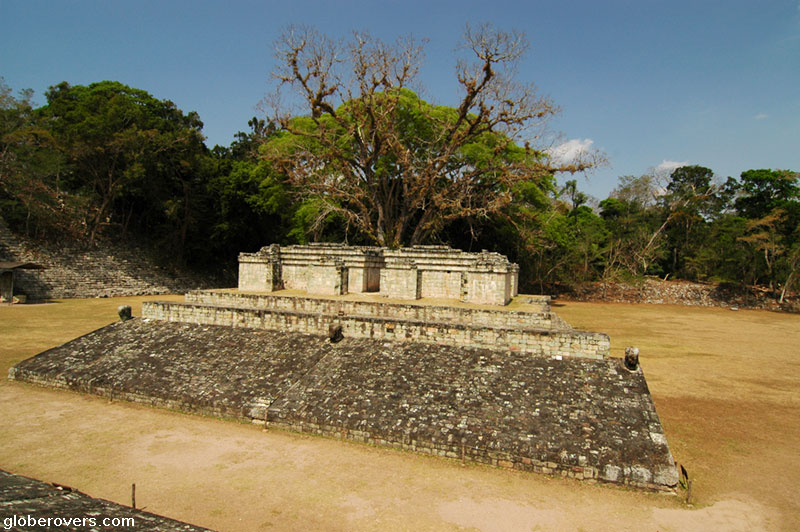
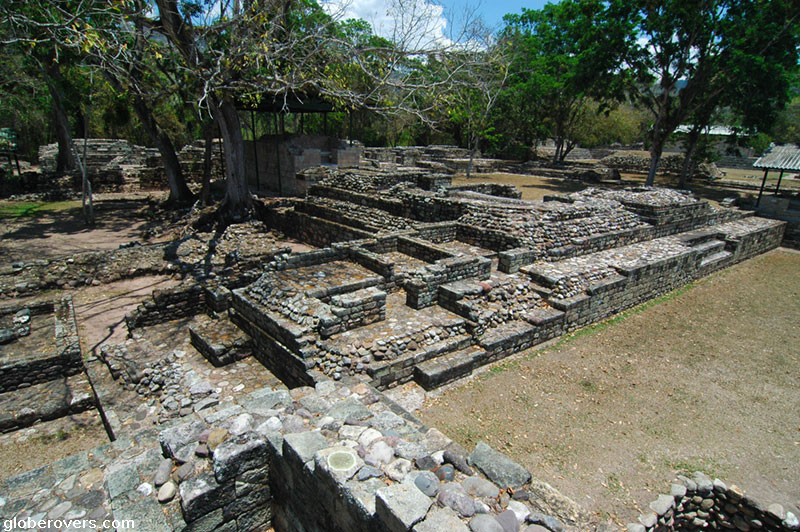
Copán is particularly noted for the friezes on some of its buildings and the portrait sculptures on its many stelae.

Stela A (replica) statue 
Stela 4 statue
The Hieroglyphic Stairway, which leads to one of the temples, is beautifully carved with some 1,260 hieroglyphic symbols on the risers of its 63 remaining steps. There is evidence that astronomers in Copán calculated the most accurate solar calendar produced by the Maya up to that time.
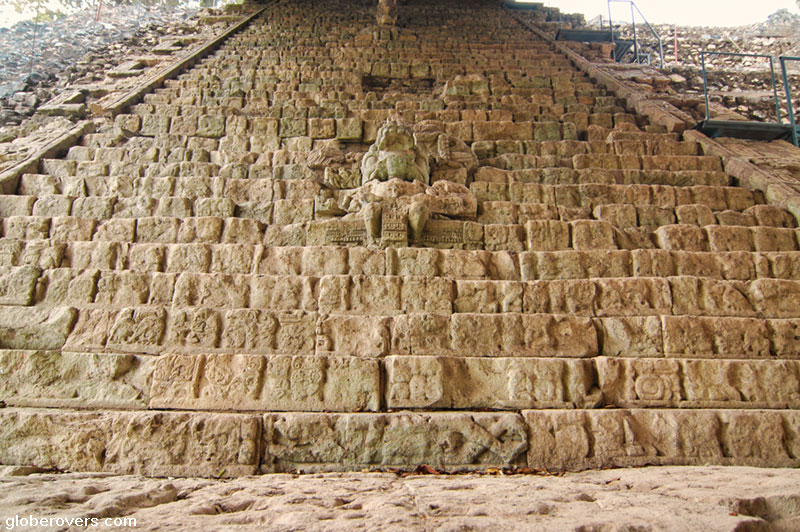
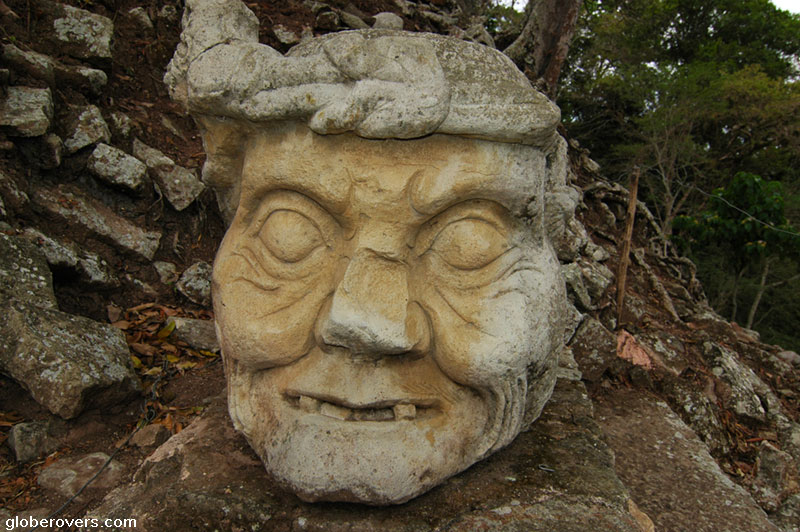
Over the years, the Copán River managed to erode a significant part of the eastern side of the acropolis. The river has been diverted to protect the site from further erosion. Look out for the colourful scarlet macaws at the ruins.

The nearby Sculpture Museum of Copán is worth a visit. While the museum may lack the romantic ambience and sense of history of the site itself, it is home to the best original sculptures and architecture the Mayans of Copán created.
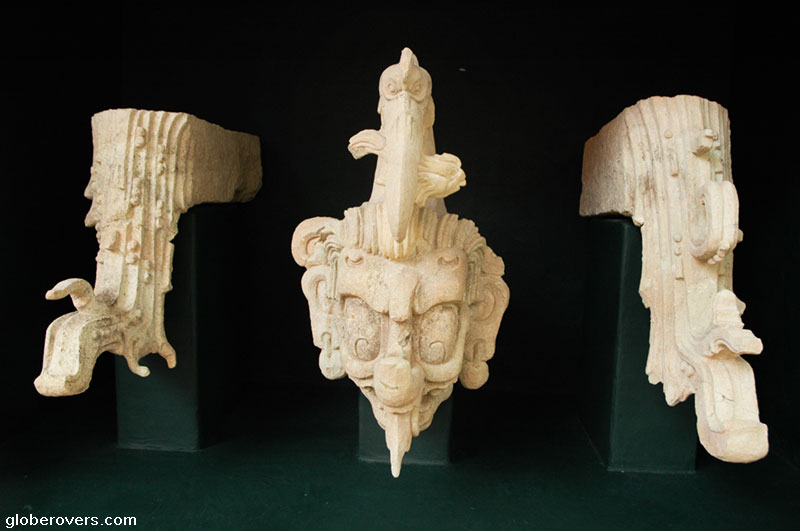
Stay in the nearby village of Copán Ruinas. Get here by regular shuttle bus to Copán Ruinas from La Entrada, a regional transport hub about 1-2 hours from Copán. There are also daily minibuses from Antigua, Guatemala, arriving in Copán Ruinas around six hours later.
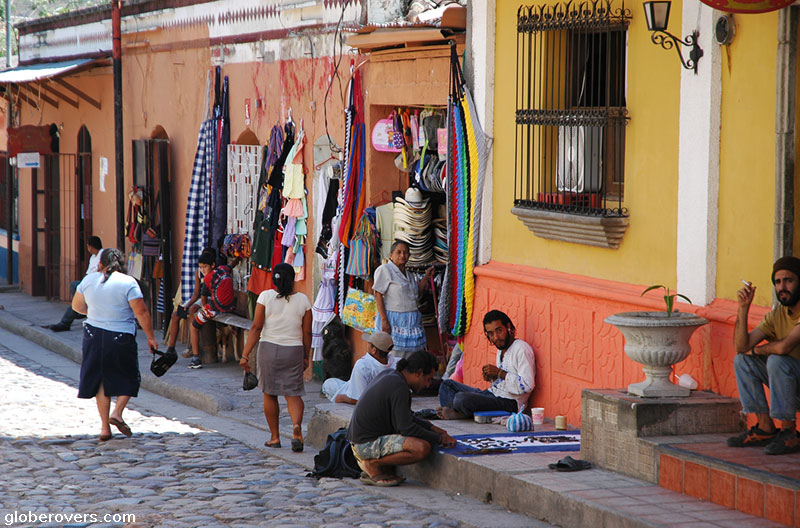

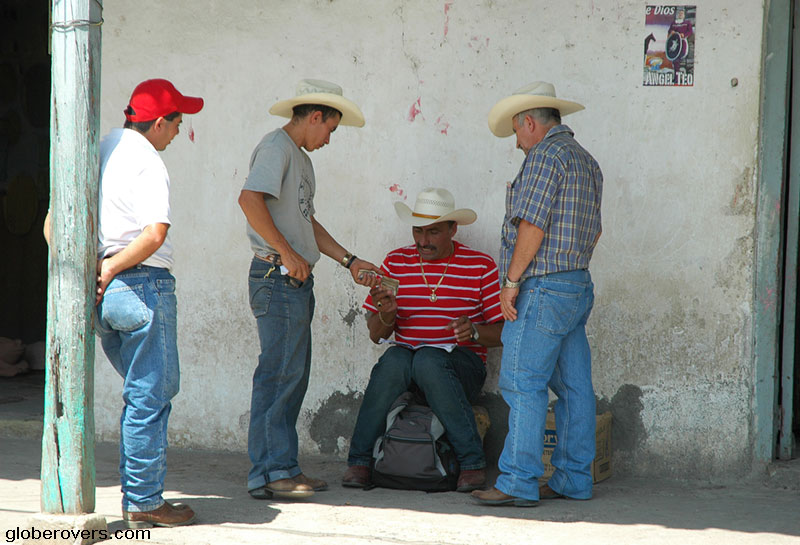
Source of some above text: Editors of Encyclopaedia Britannica
☛ Read more: Posts of Ancient Ruins

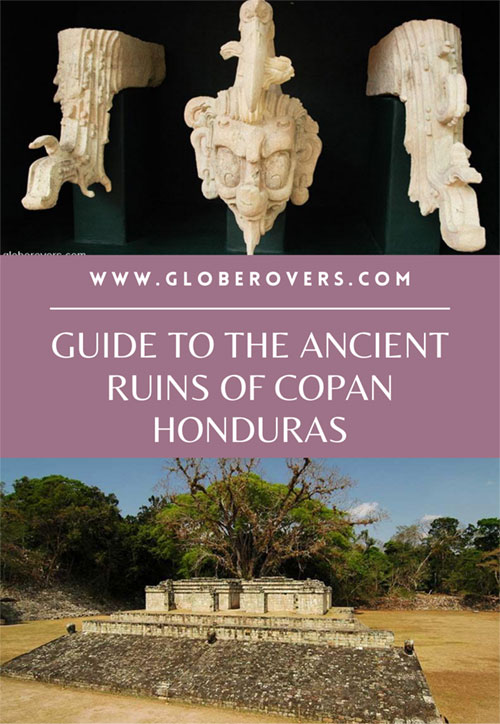

Blog post and photos by Peter who has been travelling almost full-time since 2005 and has been to over 122 countries. He visited several countries, such as Japan, more than 20 times. Peter is Editor-in-Chief and Publisher of GlobeRovers Magazine, an independent travel magazine focused on intrepid destinations.

